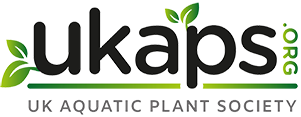Dolly Sprint 16v
Member
Gang@ukaps
After reading a considerable amount of non UKaps threads - the above subject is readily talked about. One question that cannot be answered is.
Q. The algae that is present within the water column scavenages on:
A. The surplus fertz left by the plants that have not been consumed during the lighting periodicity
B. The fertz that are within the water column waiting to be comsumed by the plants - thus when it is lighting time there is a limited amount of fertz for the plants which produces poor growth / unhealthy plants.
I even read in one thread where a guy had green spot algae deposits on the Co2 diffuser - actual on the ceramic plate , DC's where lime green / off yellow in their colouration, very minimal surface water movement to retain Co2 during non lit tank time - nobody new of a suitable answer for this issue.
, DC's where lime green / off yellow in their colouration, very minimal surface water movement to retain Co2 during non lit tank time - nobody new of a suitable answer for this issue.
Any thoughts
Regards
Paul.
After reading a considerable amount of non UKaps threads - the above subject is readily talked about. One question that cannot be answered is.
Q. The algae that is present within the water column scavenages on:
A. The surplus fertz left by the plants that have not been consumed during the lighting periodicity
B. The fertz that are within the water column waiting to be comsumed by the plants - thus when it is lighting time there is a limited amount of fertz for the plants which produces poor growth / unhealthy plants.
I even read in one thread where a guy had green spot algae deposits on the Co2 diffuser - actual on the ceramic plate
 , DC's where lime green / off yellow in their colouration, very minimal surface water movement to retain Co2 during non lit tank time - nobody new of a suitable answer for this issue.
, DC's where lime green / off yellow in their colouration, very minimal surface water movement to retain Co2 during non lit tank time - nobody new of a suitable answer for this issue.Any thoughts
Regards
Paul.



















